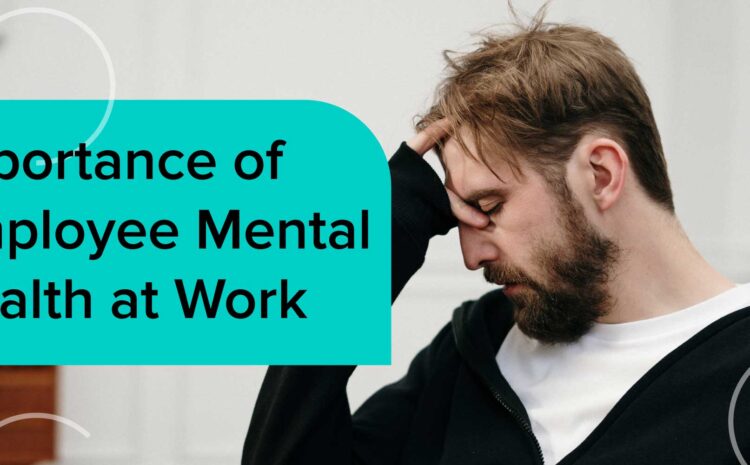Hello, and welcome to another exciting topic! Today, we’ll talk about workplace trends in 2023. I hope you find this post useful and learn a ton! Let’s get started.
In 2022, the workplace experienced a transition to remote labor, inflation, layoffs, and warnings of a probable recession. Employers will prioritize recruiting and retention initiatives to retain workers in a competitive employment market as we begin a new year. New approaches to work and retention, as well as technology advancements, such as the increased usage of AI and advanced data analytics, will drive further changes to the most popular workplace trends. The following are the most important workplace trends for 2023.
- Employee Wellbeing: Work-life balance and mental health are important workplace trends for 2023. According to an Indeed study, 90% of individuals believe that how we feel at work counts, yet just 49% believe their employer is focused on monitoring and increasing wellbeing. Businesses are designing workplaces to be engines of wellbeing by offering perks, flexibility, sign-on incentives, and a generally enjoyable working environment. 81% of workers will search for jobs that promote mental health in the future, because workplace stress affects the individual worker and their connections with friends, family, and co-workers.
- Skill-Based Hiring: Employees must reskill, upskill, and shift employment due to rapid technical and economic development. Businesses are likely to turn to alternative certification programs and spend more money on internal skill-upgrading initiatives in 2023 to address skills gaps. Skills development may help firms achieve their most pressing business demands and can be quantified using skill data.
- Work Flexibility: Employees value workplace flexibility, with 58% choosing to work remotely and 87% choosing flexible work choices. Studies demonstrating higher sales, less burnout, and reduced absenteeism support the four-day workweek’s growing popularity. Employers must develop new work rhythms that allow for flexibility. Flexibility is wanted by all sectors of workers and is more than just an advantage in a labor market that is tight.
- Hybrid Working: According to the Gartner 2022 Frontline Worker Experience Reinvented Survey, 58% of businesses invested in improving employee experience in the previous year, with a third planning to do so in the future year. Employees on the front lines of industry and healthcare demand equal flexibility and control over their work schedules as well as paid leave.
- Workplace Surveillance: Businesses in 2023 must develop systems to monitor employee output and standards while protecting employees’ privacy and personal rights. Remote work is increasing workplace surveillance activities, with 60% of organizations employing employee monitoring software to track their employees’ behavior and 17% contemplating it. The Global Employee Monitoring Software Market was estimated to be worth USD 1.1 billion in 2021 and is expected to grow to USD 2.1 billion by 2030, according to Spherical Insights & Consulting.
- Improved Diversity, Equity, and Inclusion: Diversity, equity, and inclusion (DEI) measures are critical for employee engagement and recruiting, but they can also result in financial losses. Companies should prioritize DEI in 2023 and utilize measurements and KPIs to evaluate success, because 42% of employees feel their organization’s DEI activities are contentious. This can harm employee engagement, inclusiveness, and trust.
- Advanced Use of AI and Automation: ChatGPT’s debut has increased public awareness of the relevance and quick expansion of artificial intelligence (AI). AI provides several prospects for development for businesses, but businesses must invest in upskilling and reskilling their staff to deal with these new technologies.
- Focus on Soft Skills: Leaders should encourage workplace upskilling and reskilling to establish a growth mindset in their organization’s culture. Microsoft and Unilever are two companies that have prioritized corporate-wide growth strategies. Establishing a learning culture within firms will become even more vital in 2023 to bridge skill gaps.
- Technology and Data in HR: Organizations are utilizing data analytics to learn why employees leave and to reduce turnover. Employers are using people analytics to learn more about organizational performance and individual employee requirements. Cloud computing, collaborative technology, and digitalization are also being used by businesses to improve HR processes and employee experiences.
- Focus on Employee Growth: Leaders should encourage workplace upskilling and reskilling to establish a growth mindset in their organization’s culture. Microsoft and Unilever are two companies that have prioritized corporate-wide growth strategies. Establishing a learning culture within firms will become even more vital in 2023 in order to bridge skill gaps.
As the world of work continues to evolve, it’s difficult to predict how changing economic and corporate trends will affect workplace objectives and trends in 2023. However, the pandemic has expedited worker change, and businesses must now stay up with skill development more than before.
Thanks so much for reading! While you’re here, why not check out some of our other blog posts? We write on a range of topics in the worlds of business, IT, HR, and others.

 Linkedin
Linkedin


